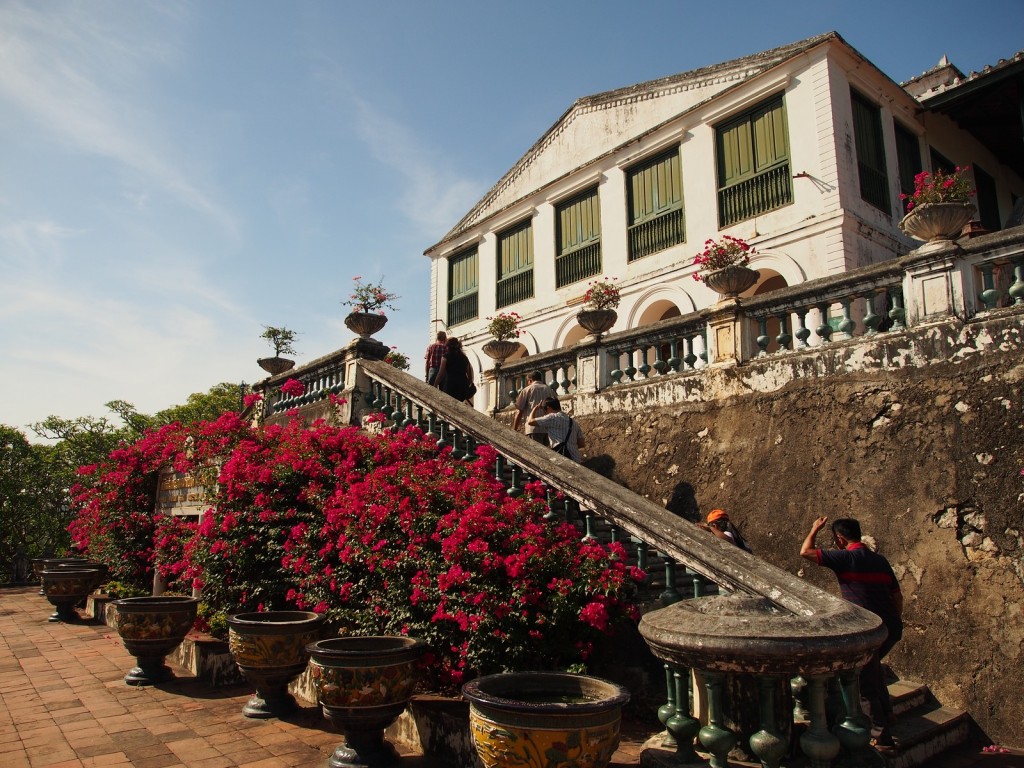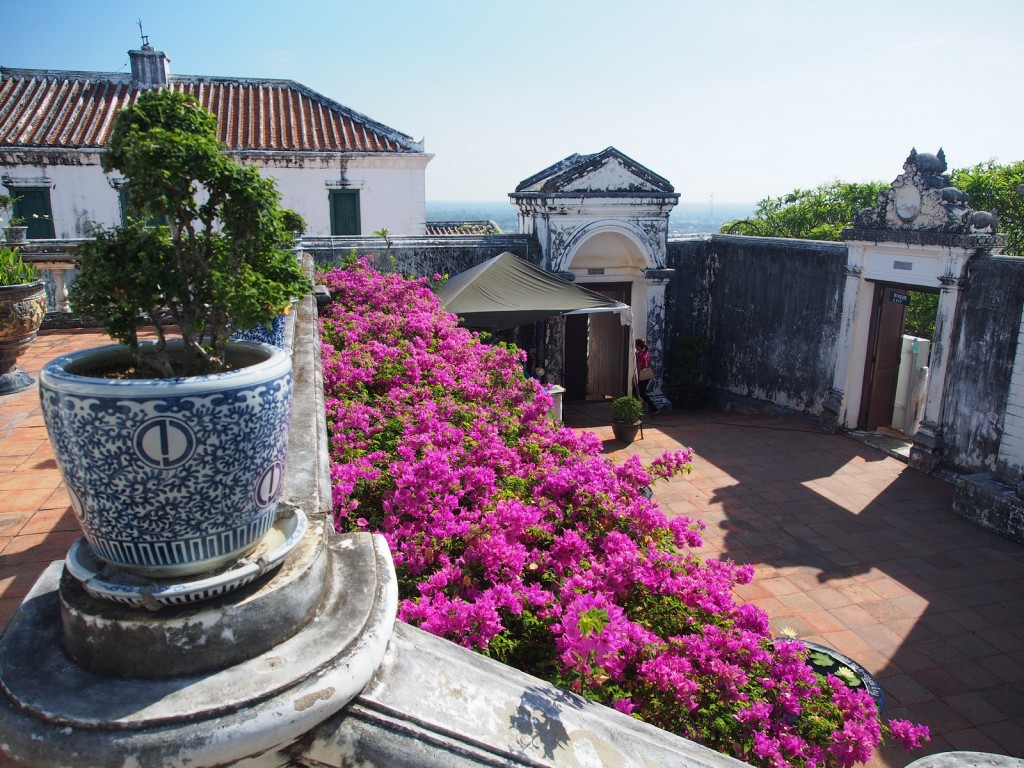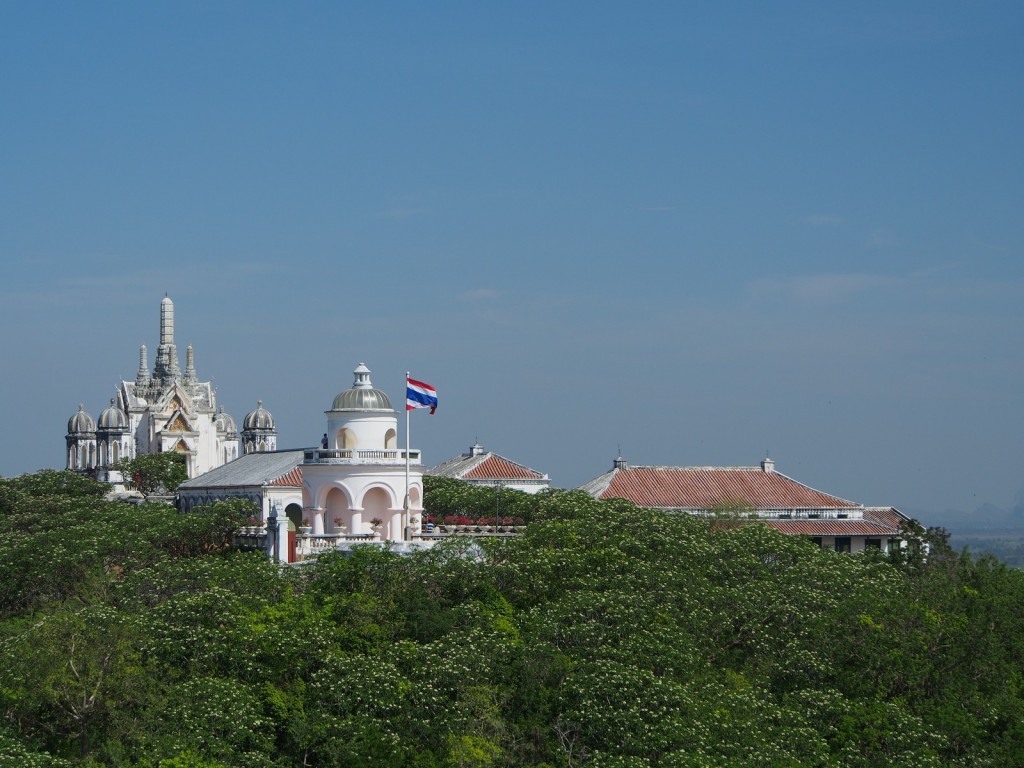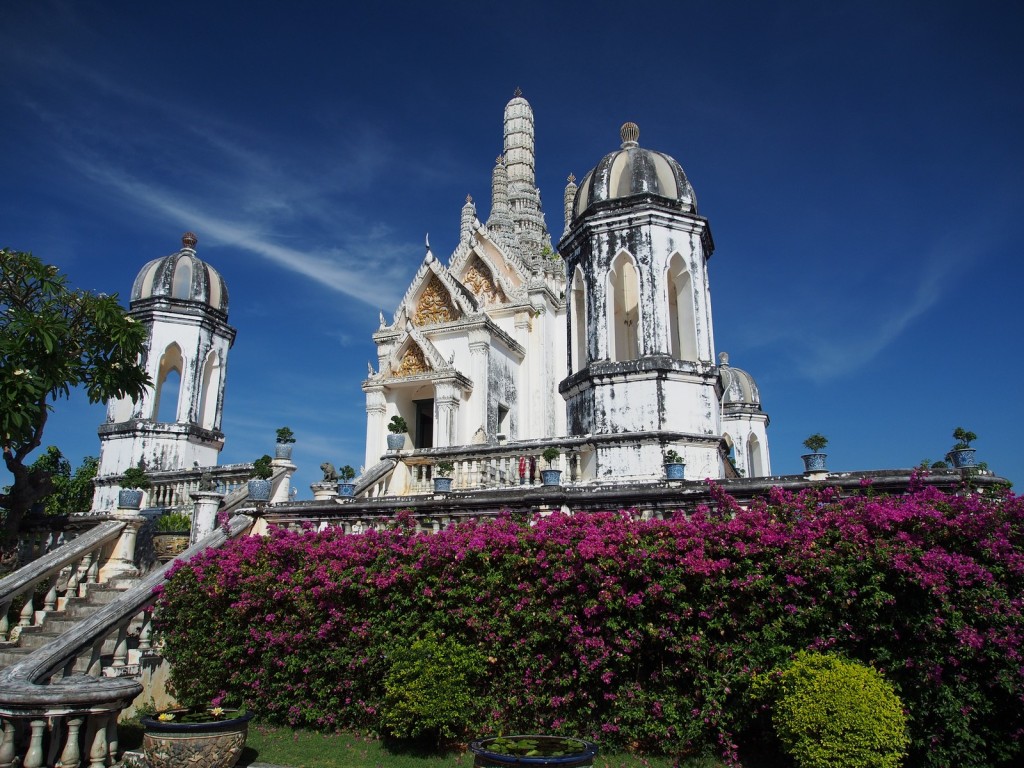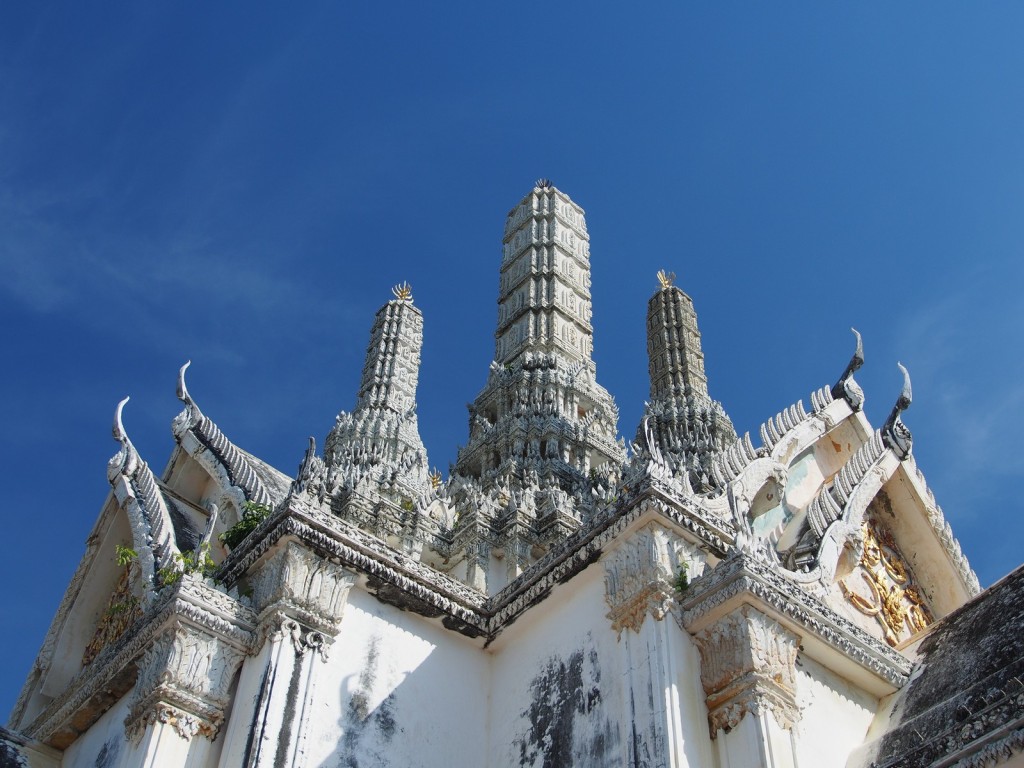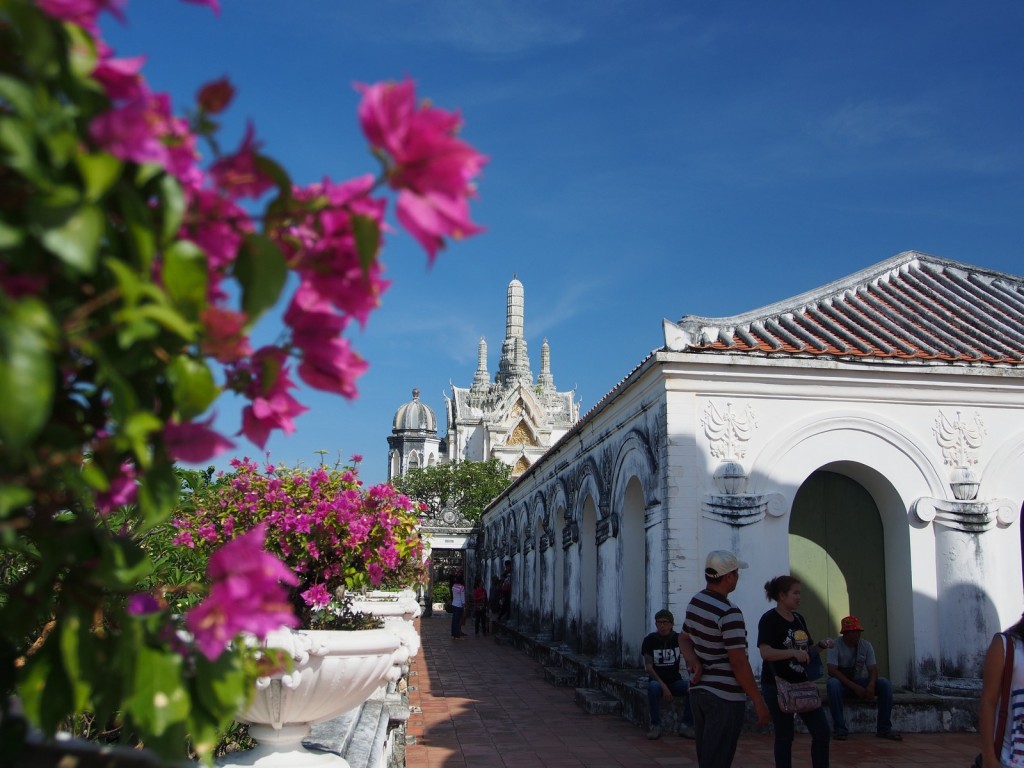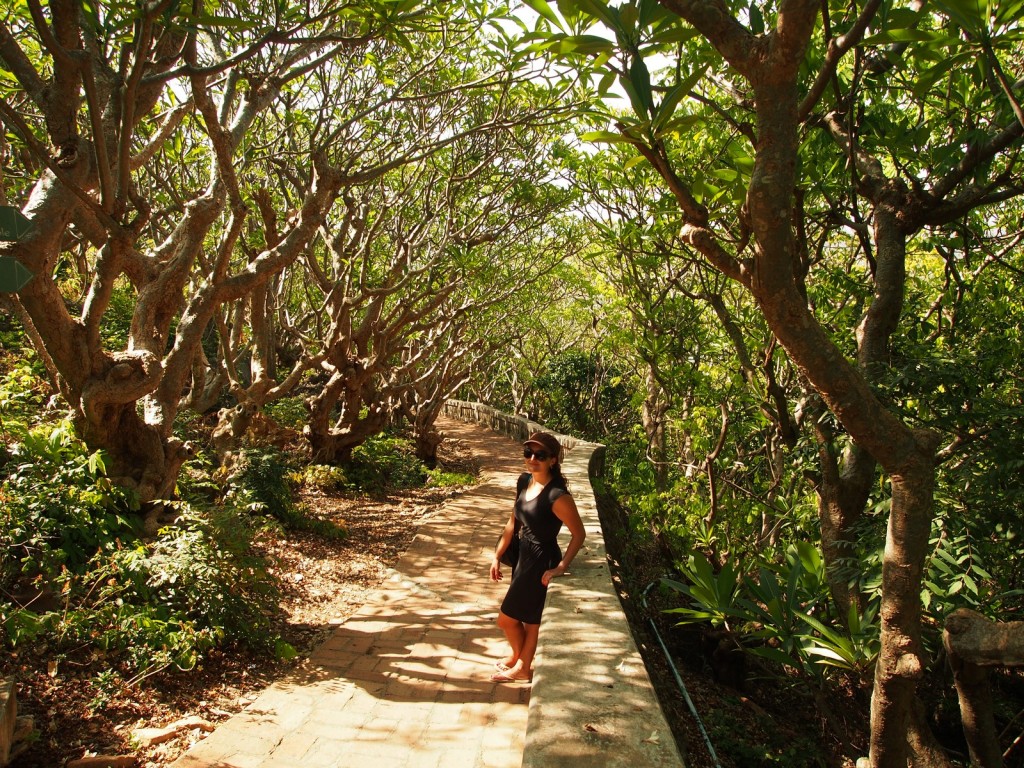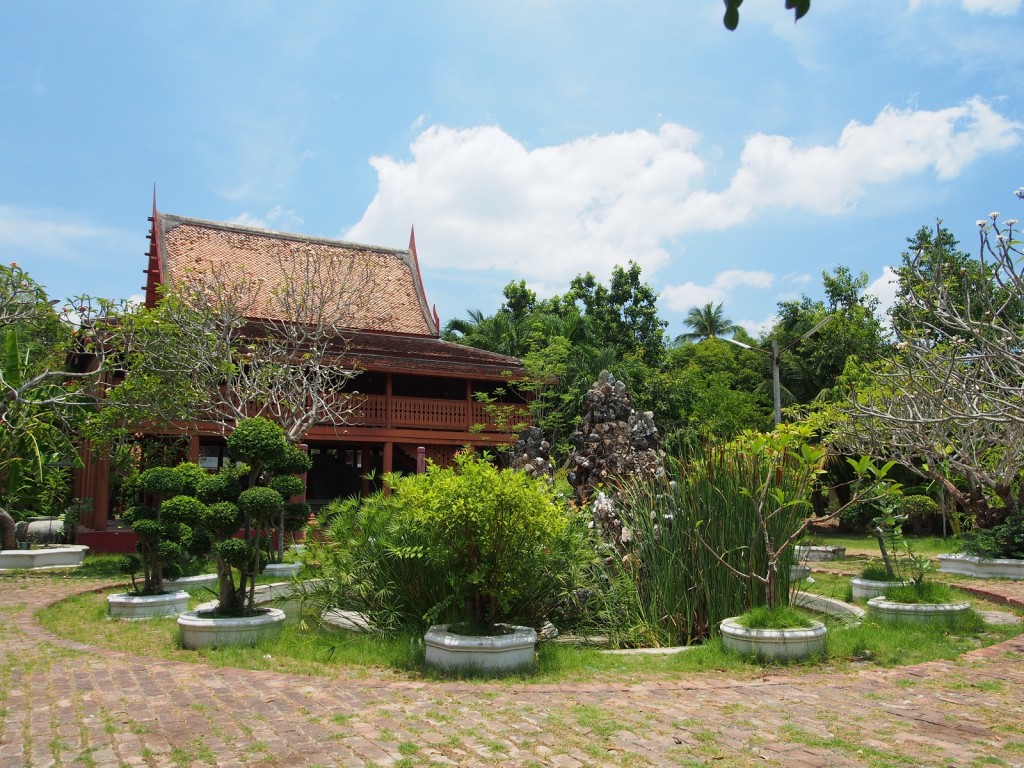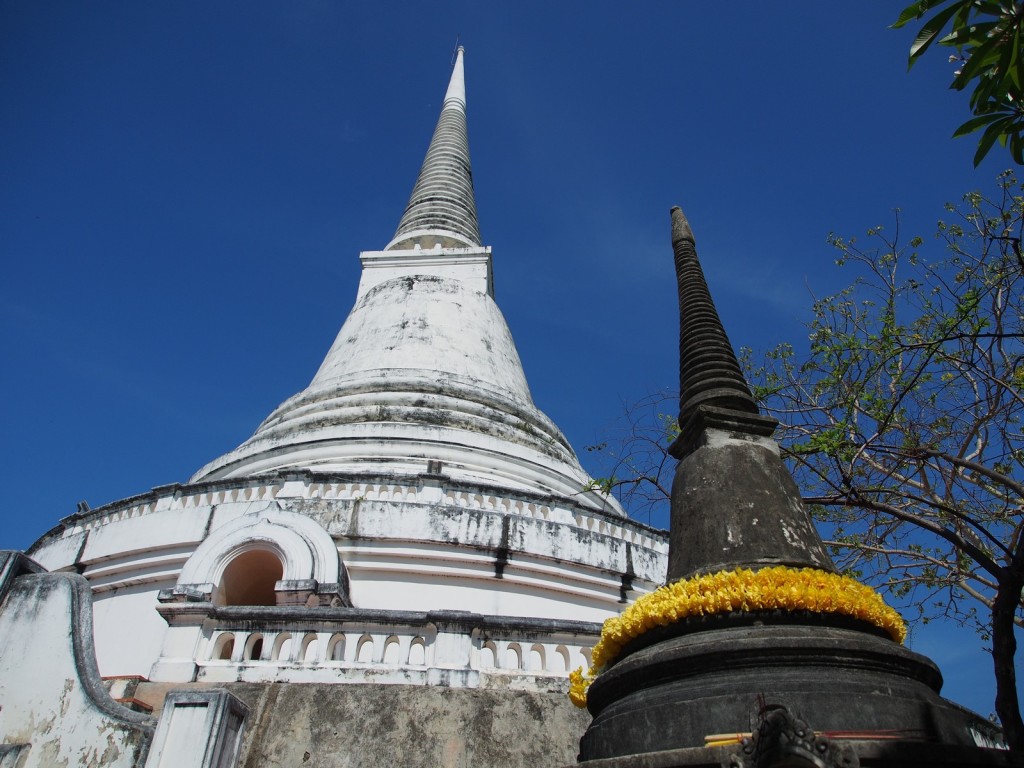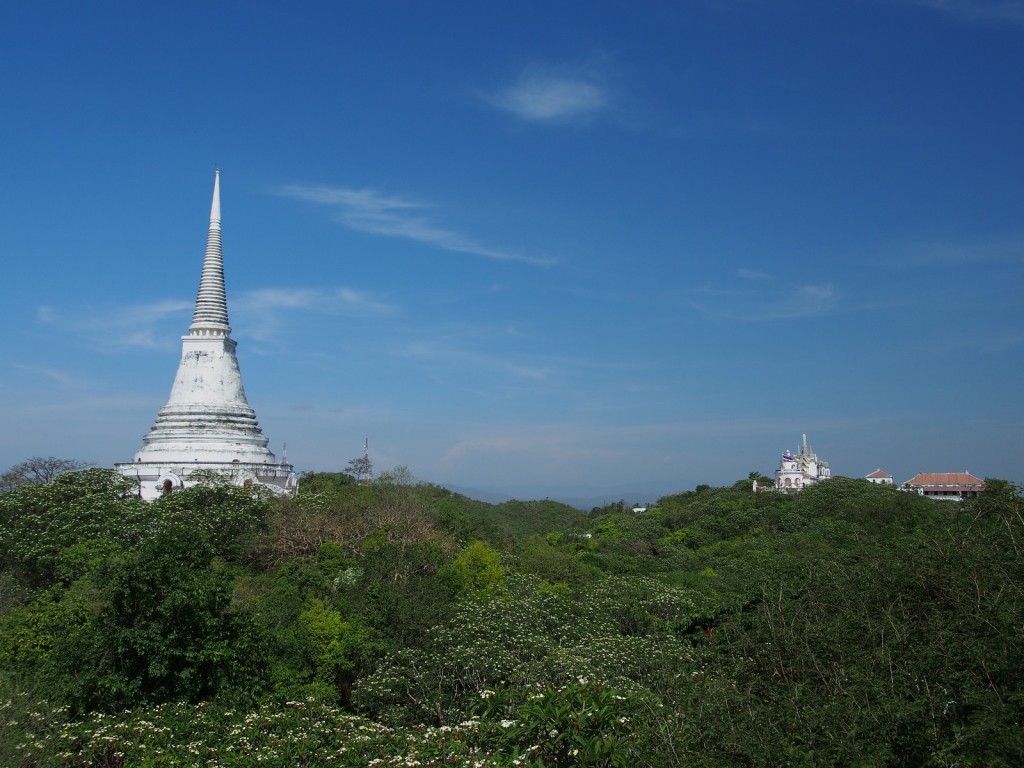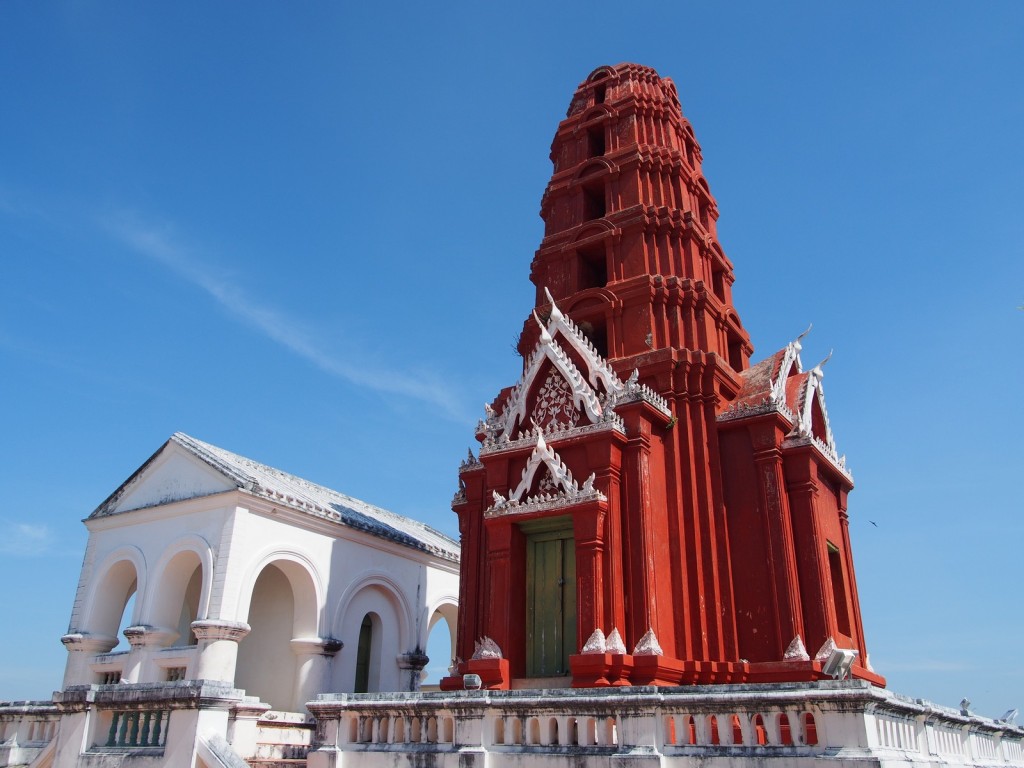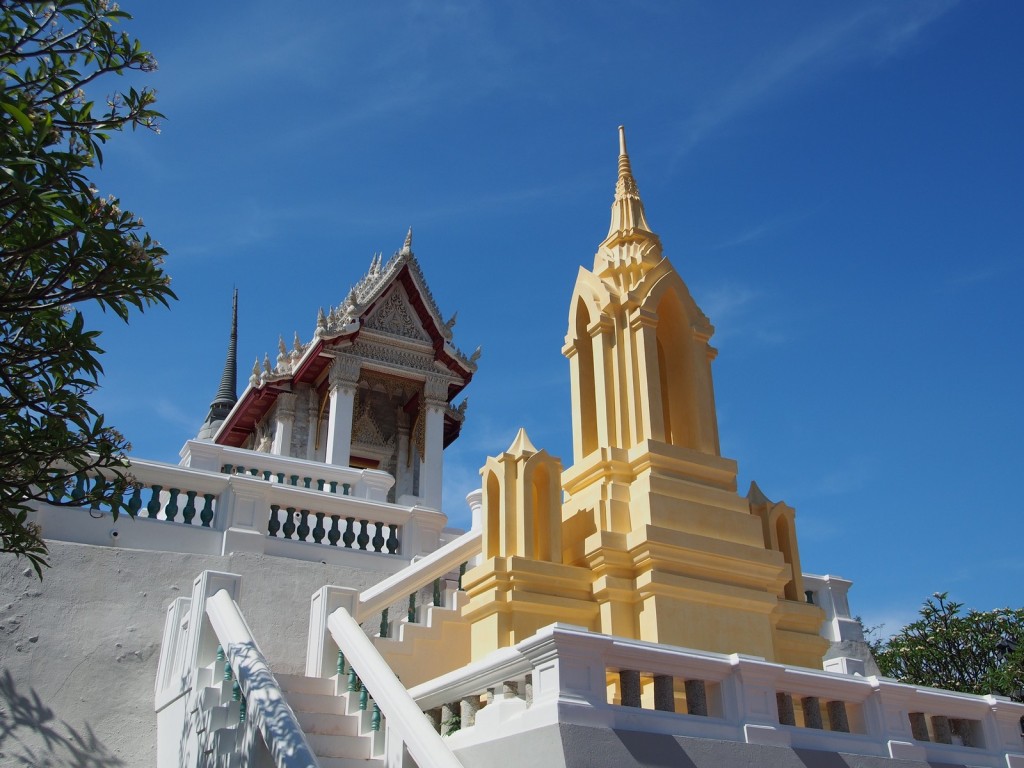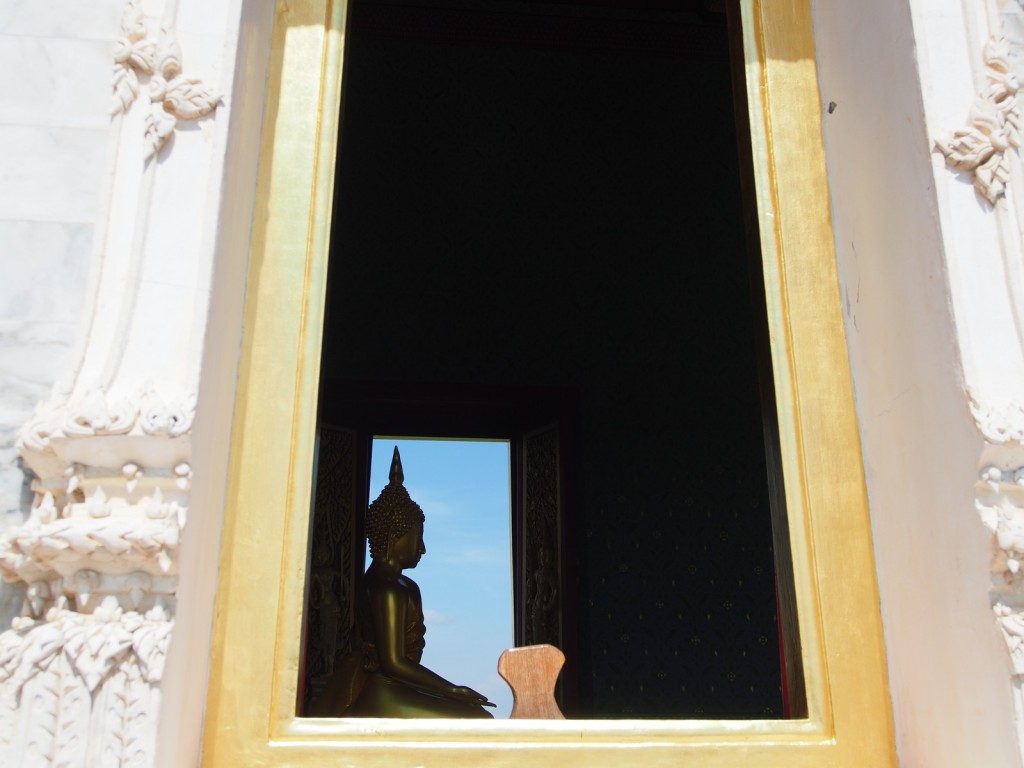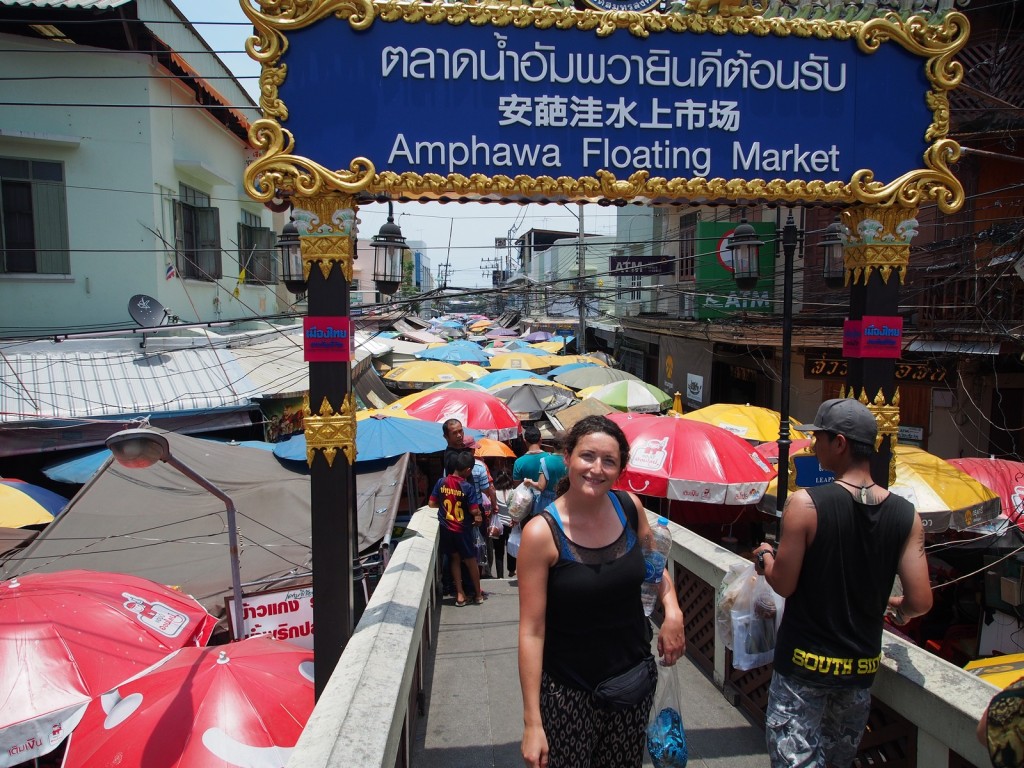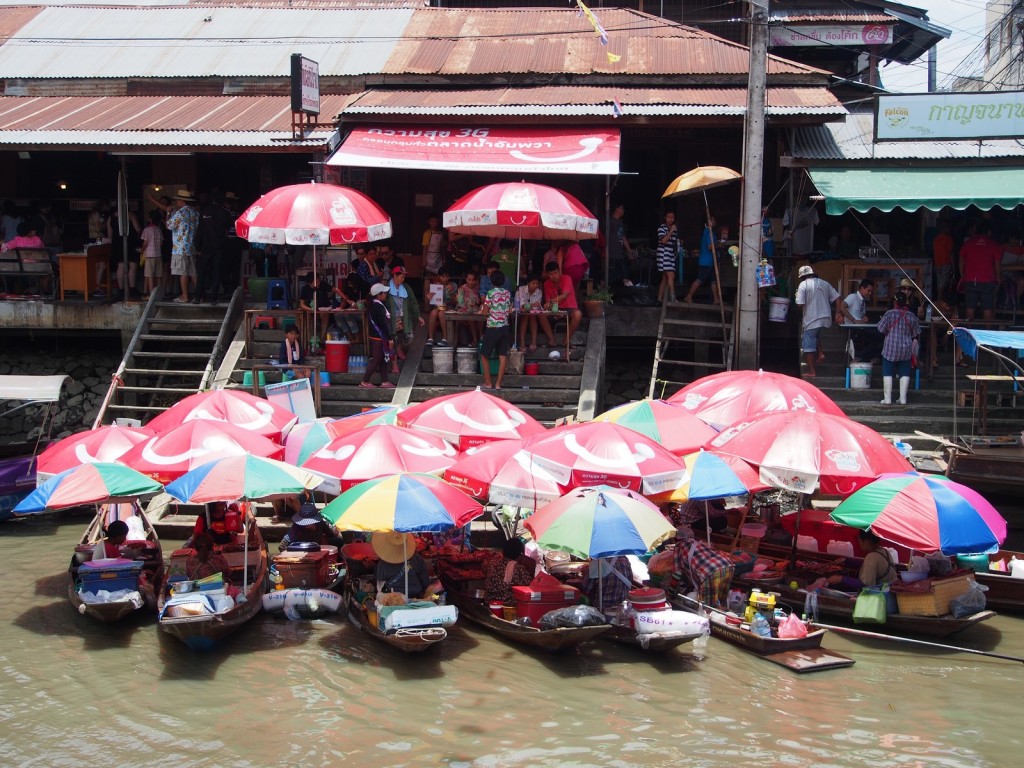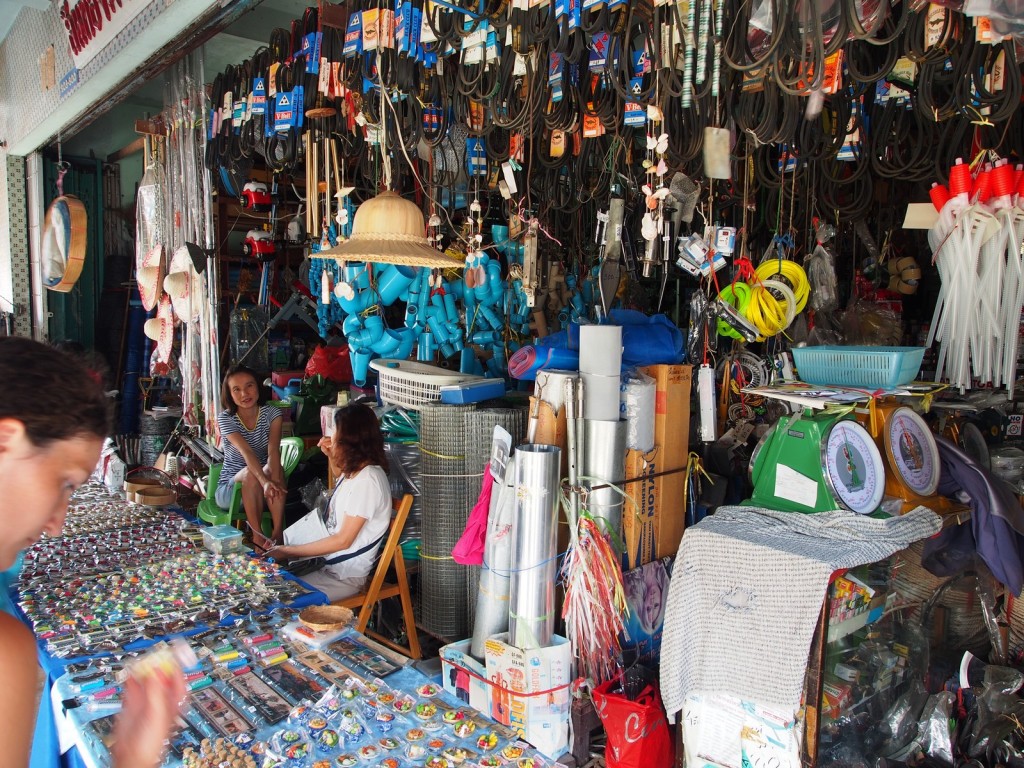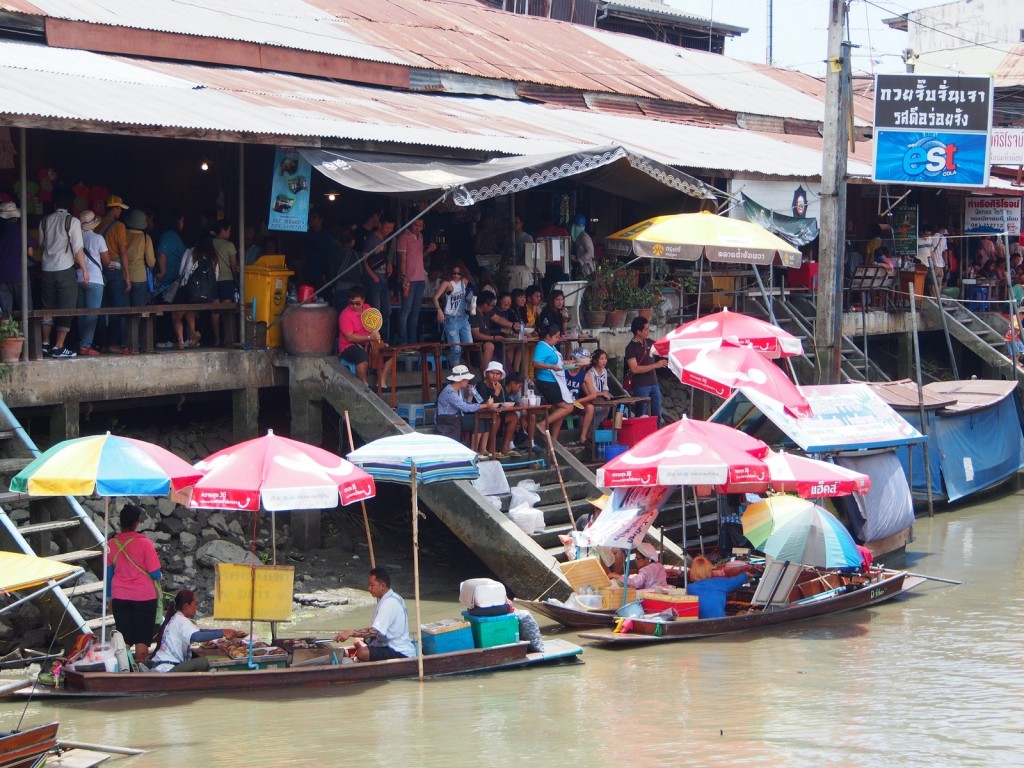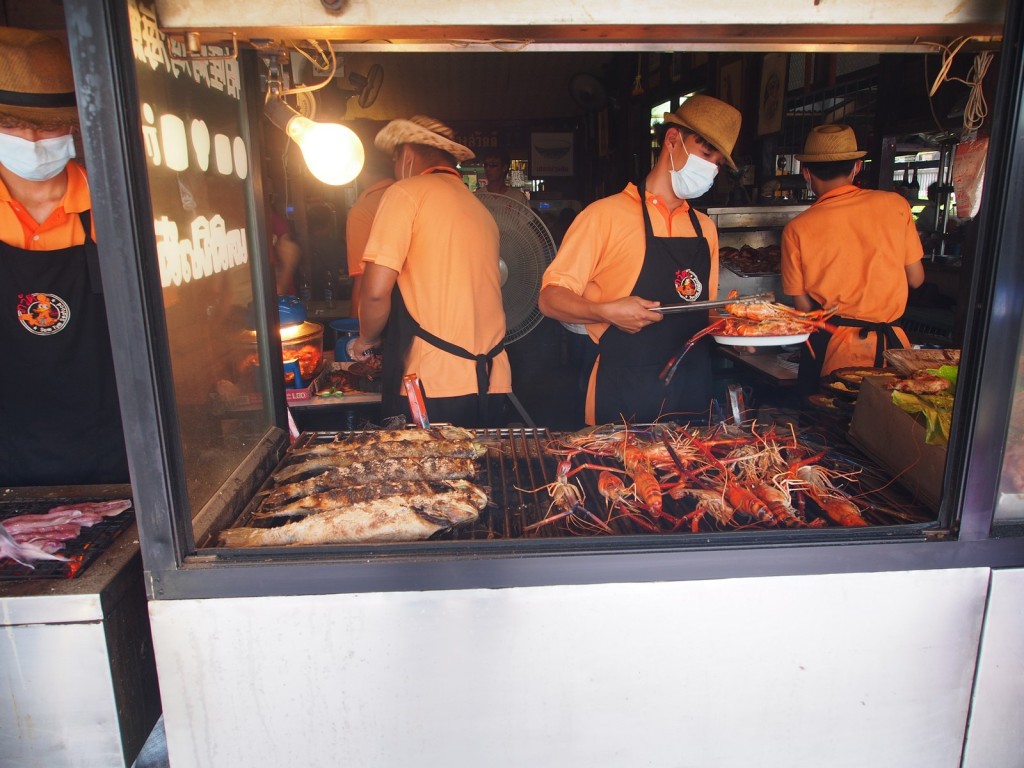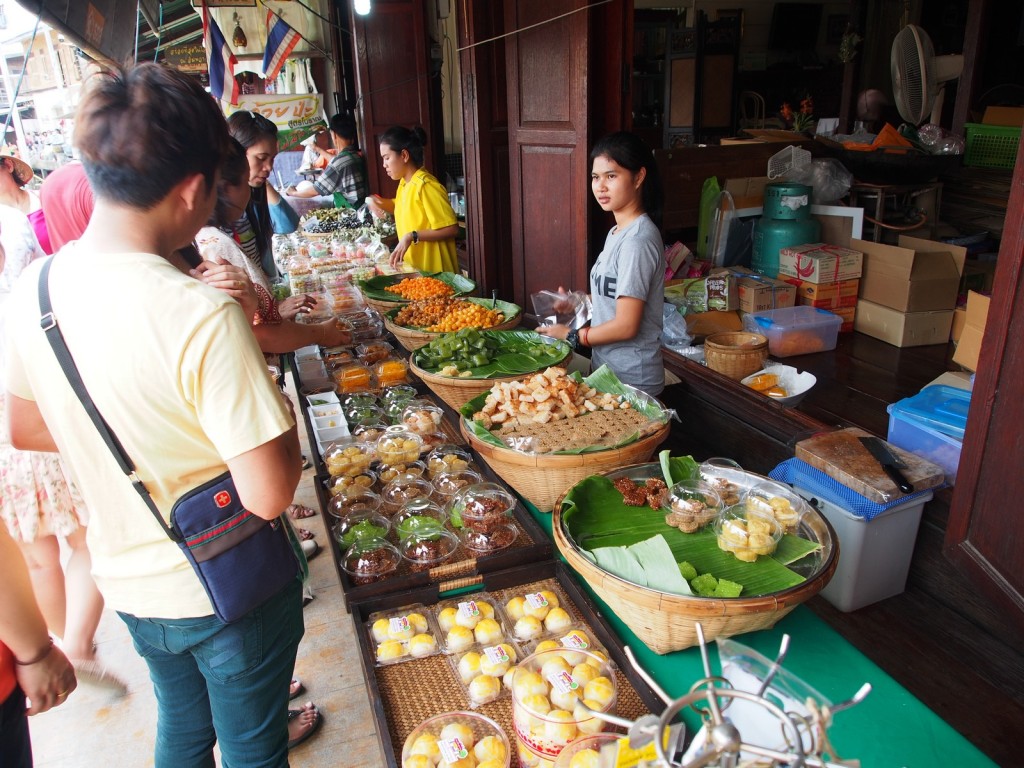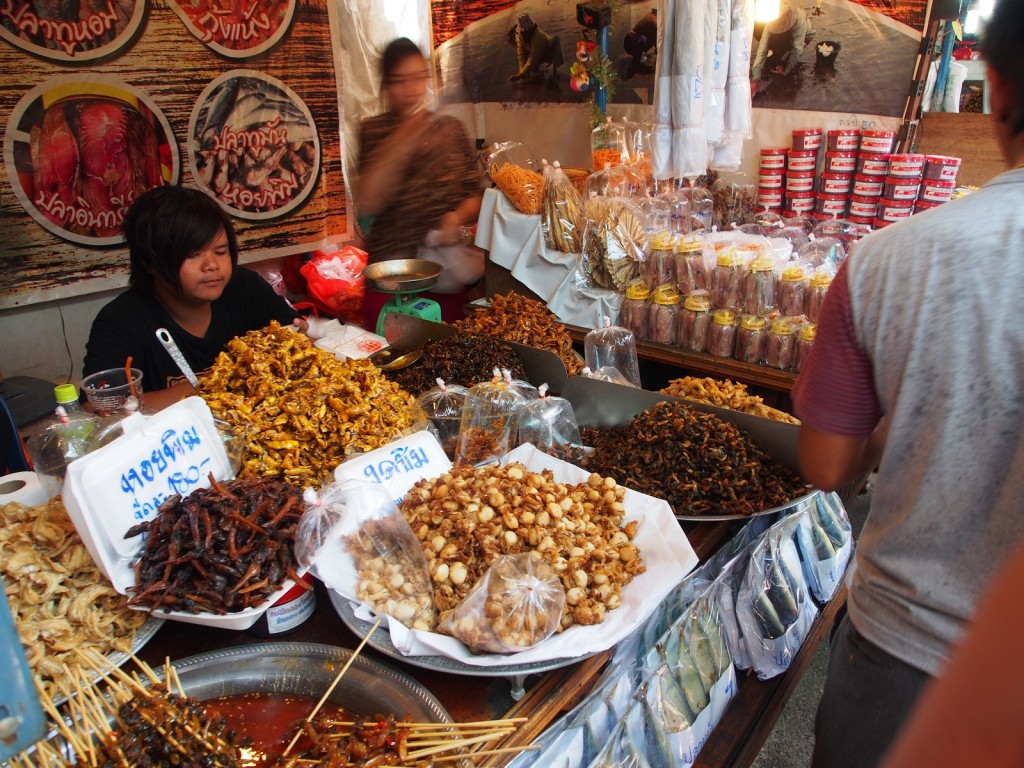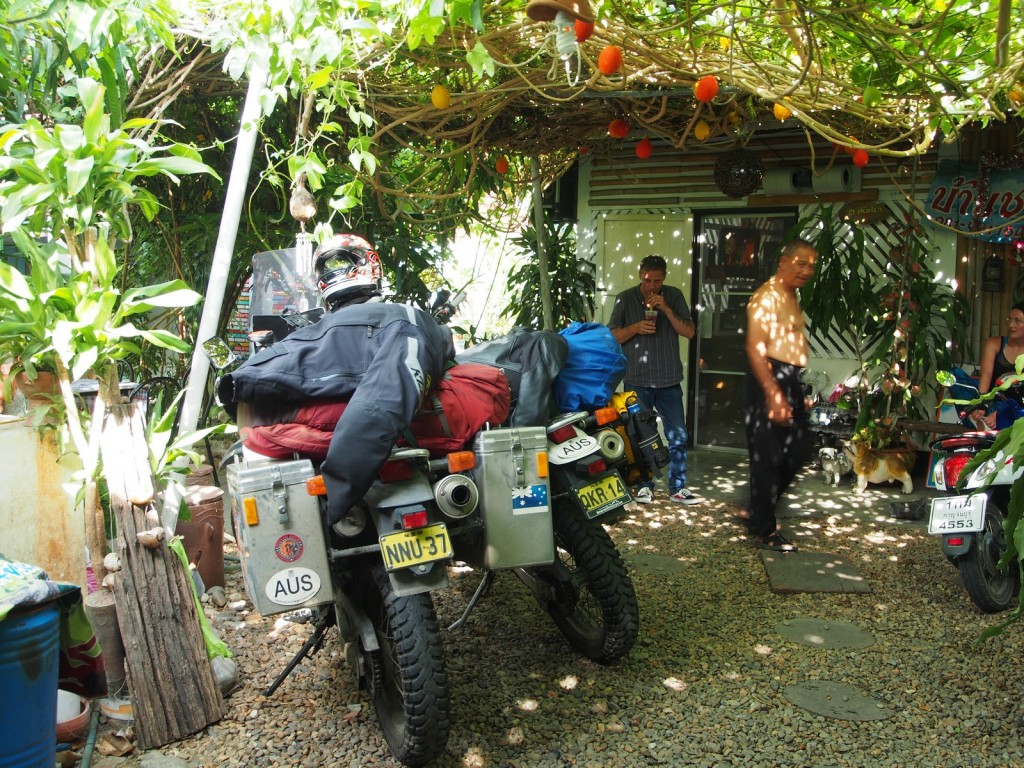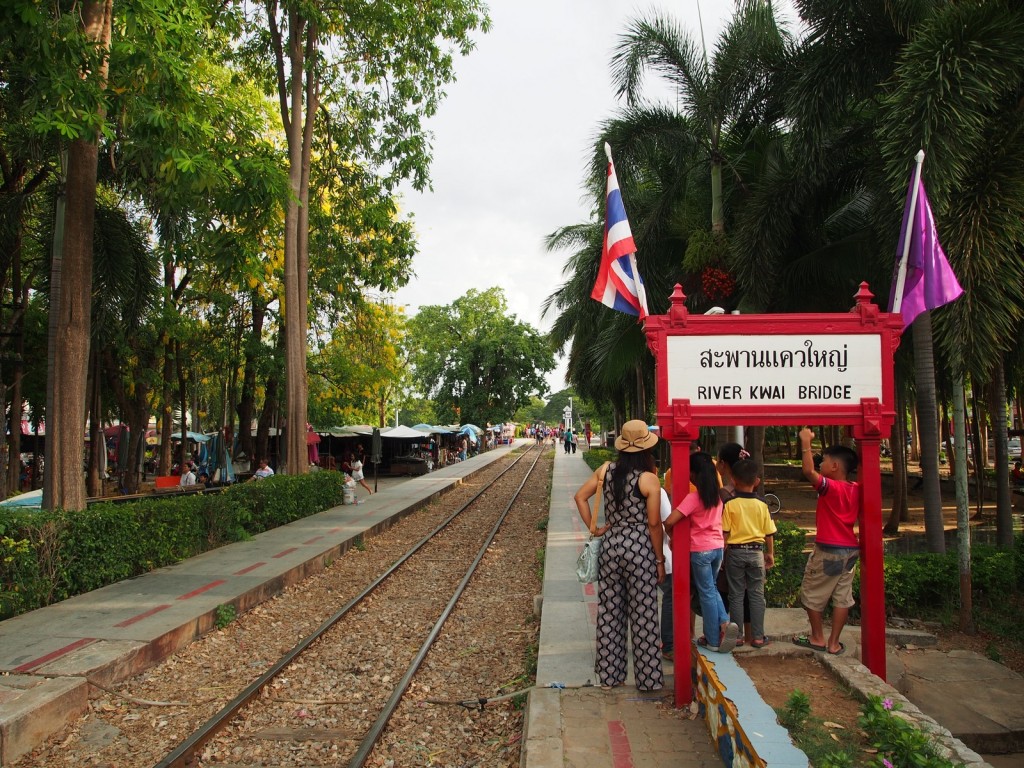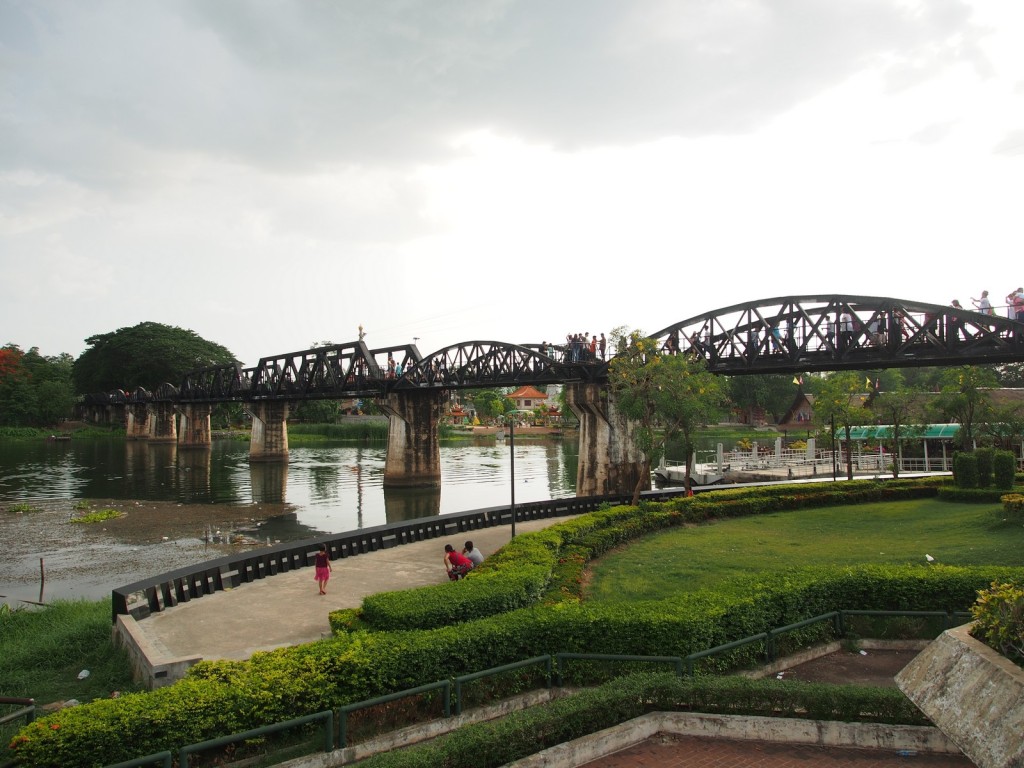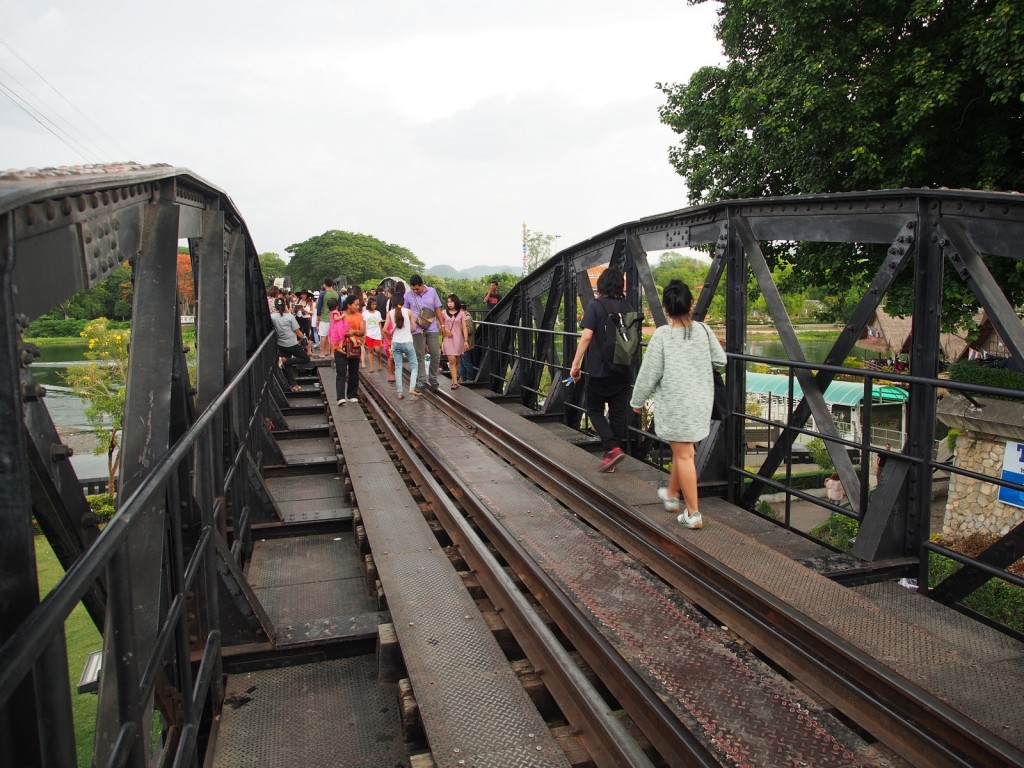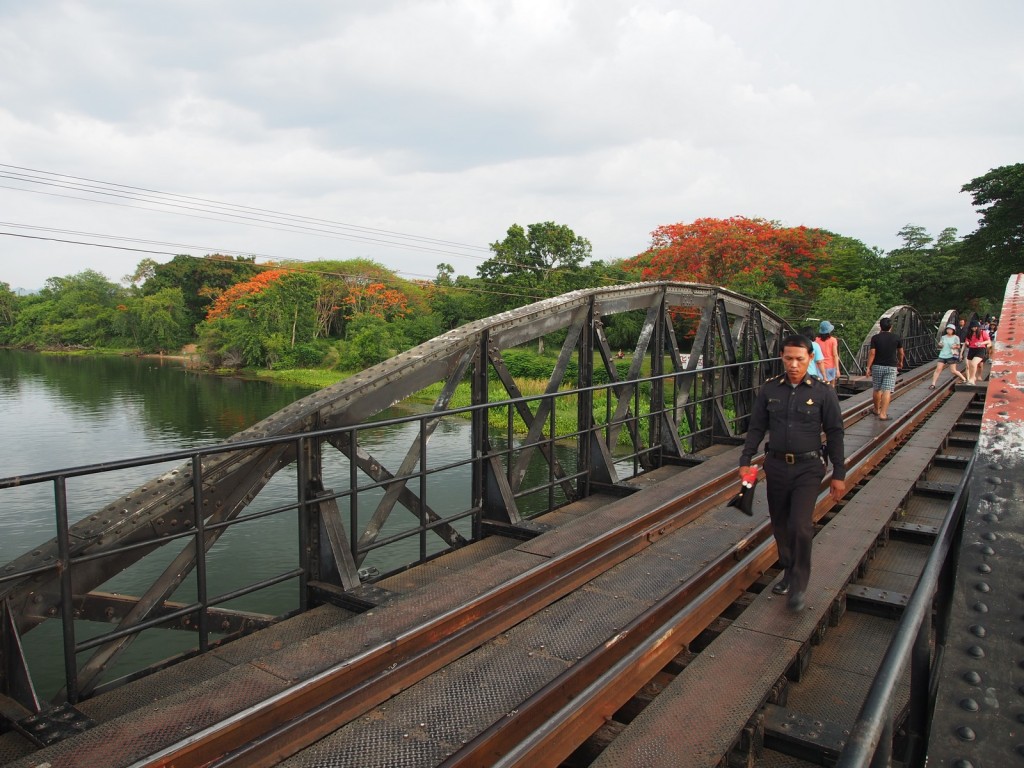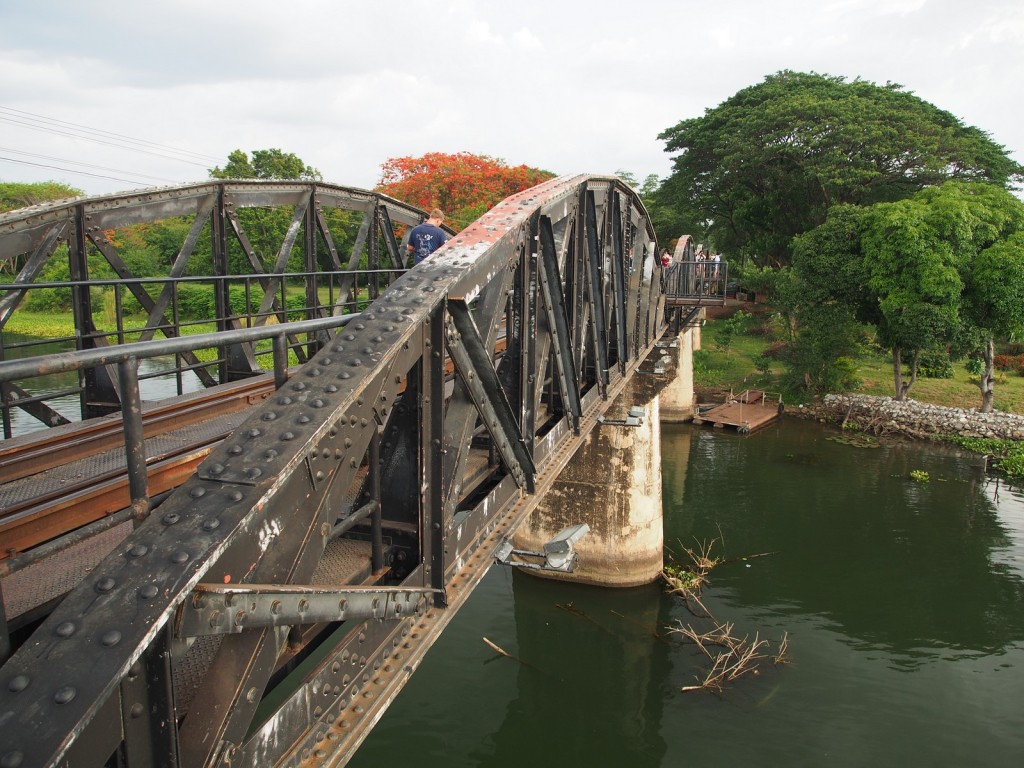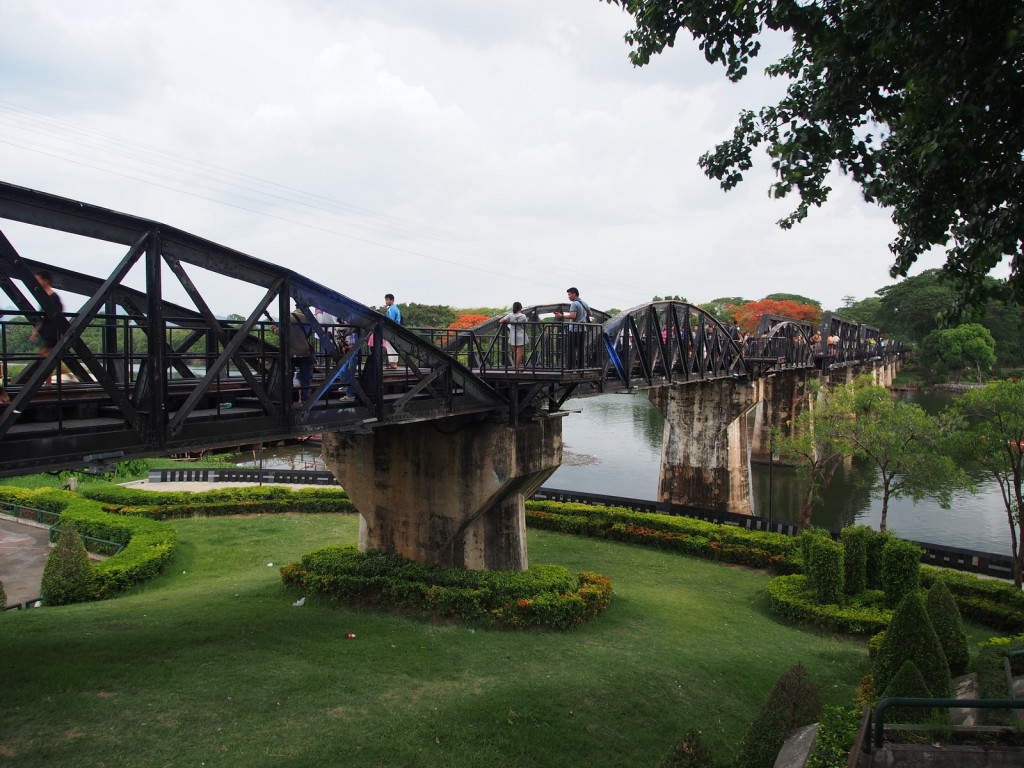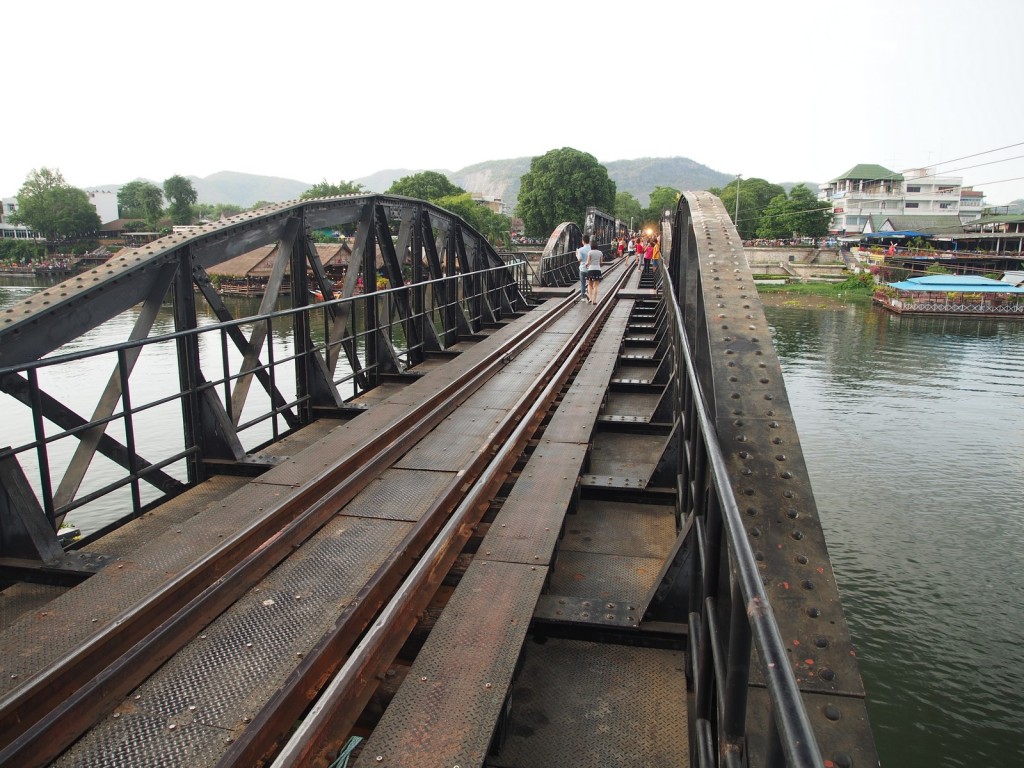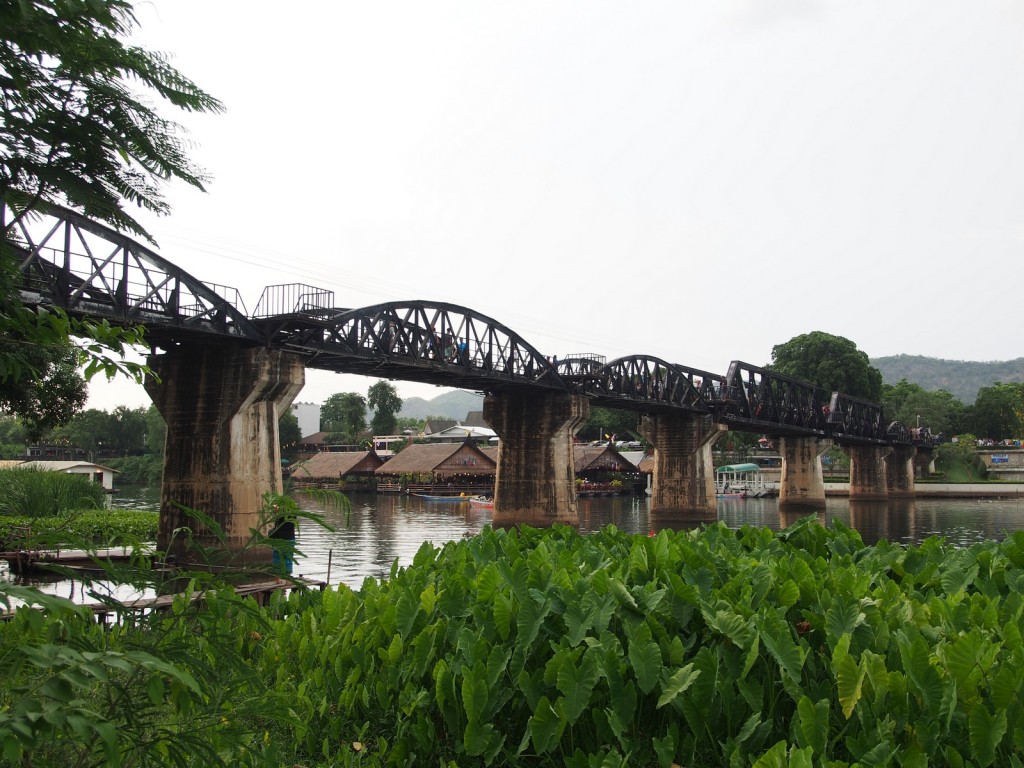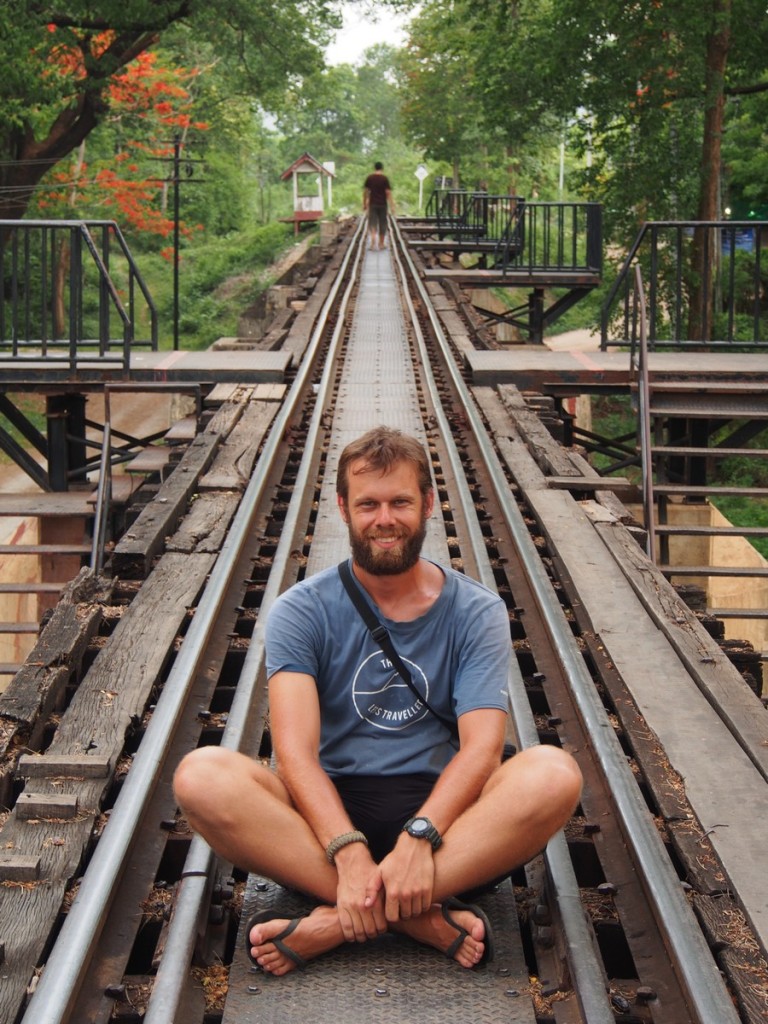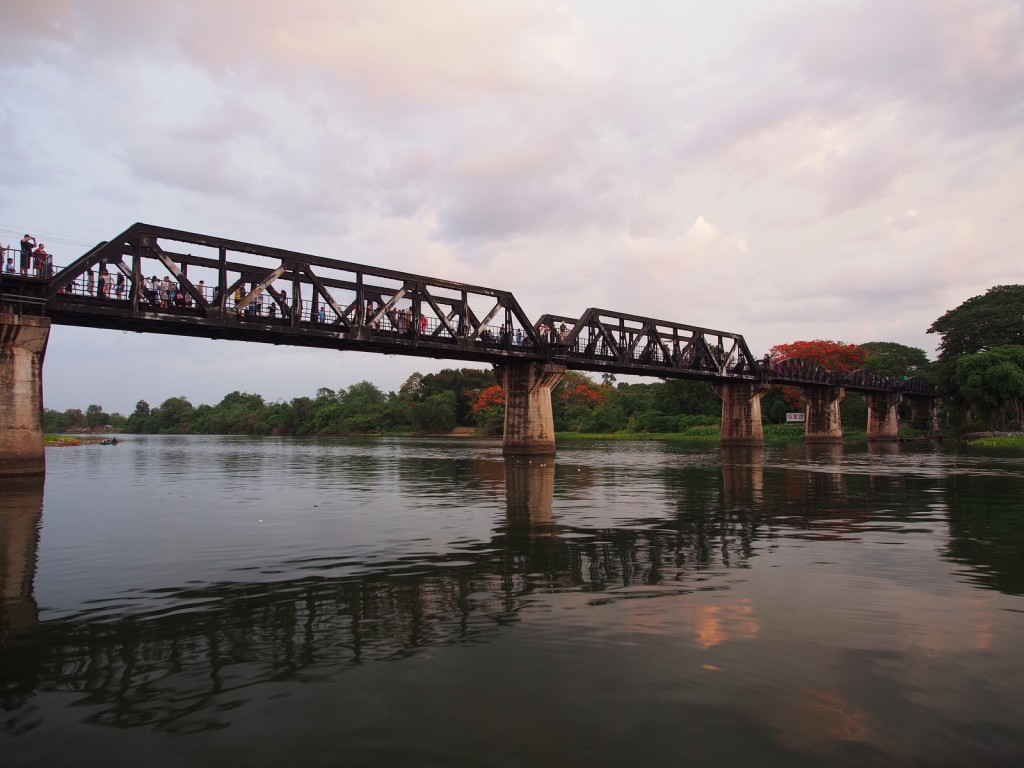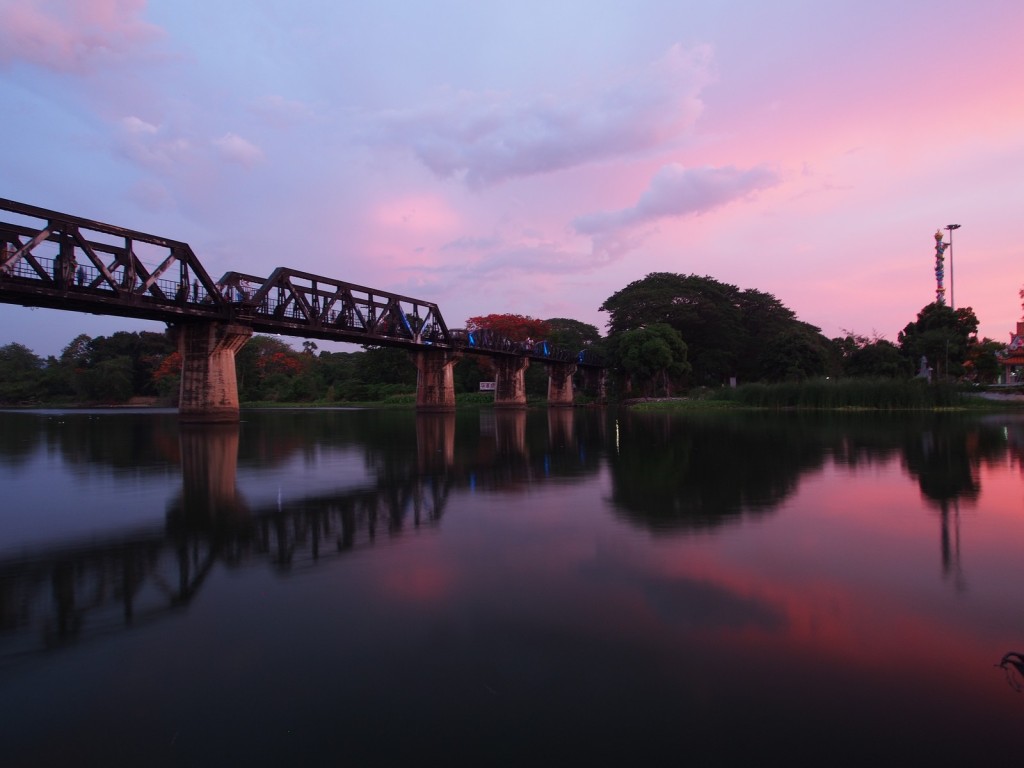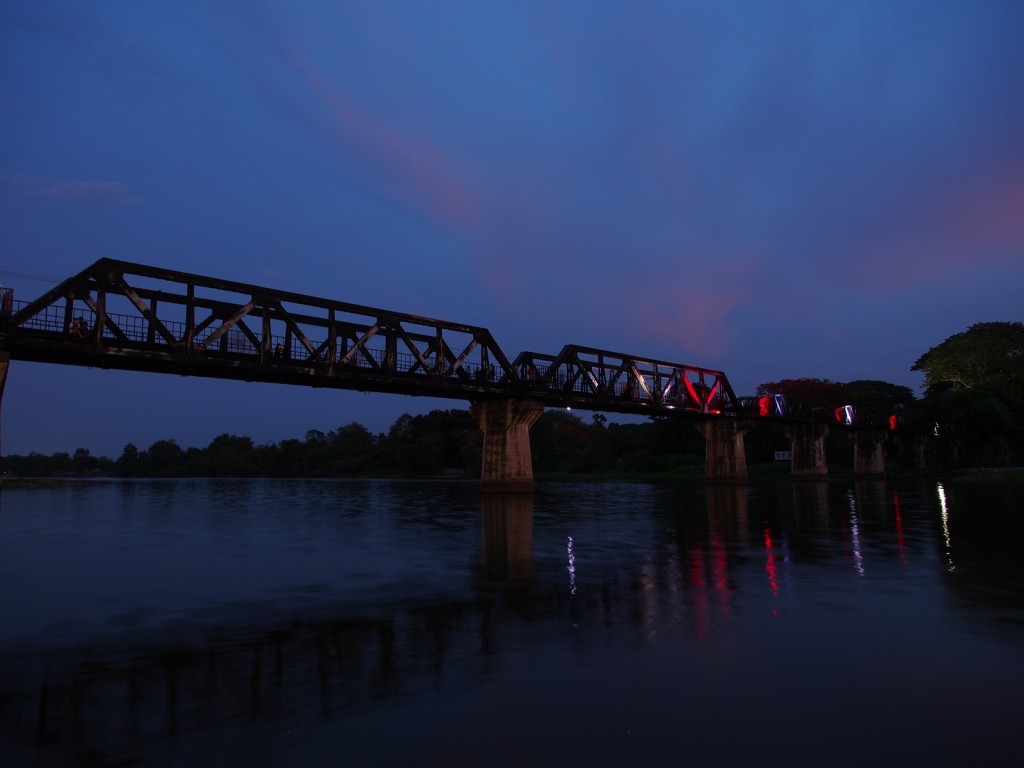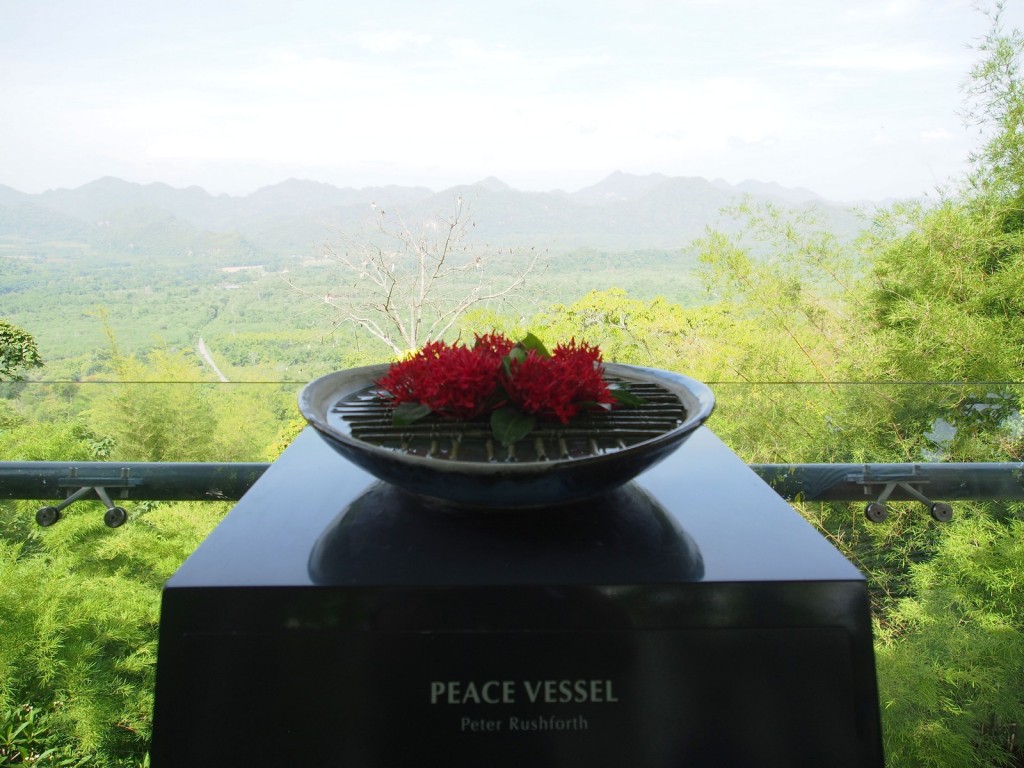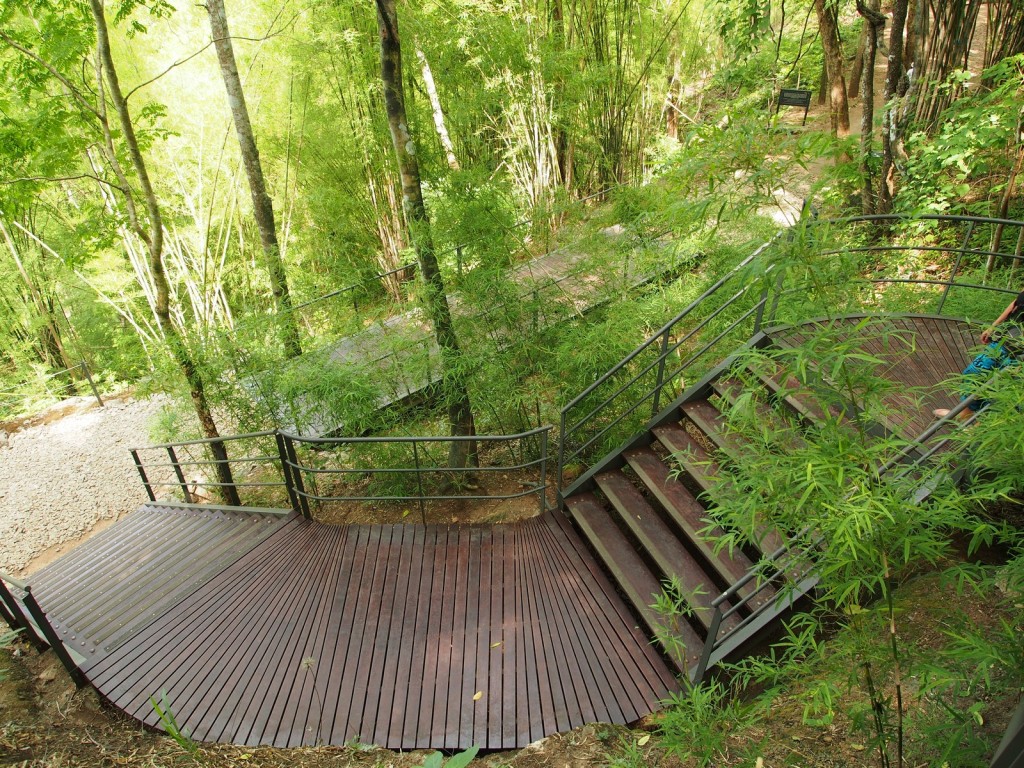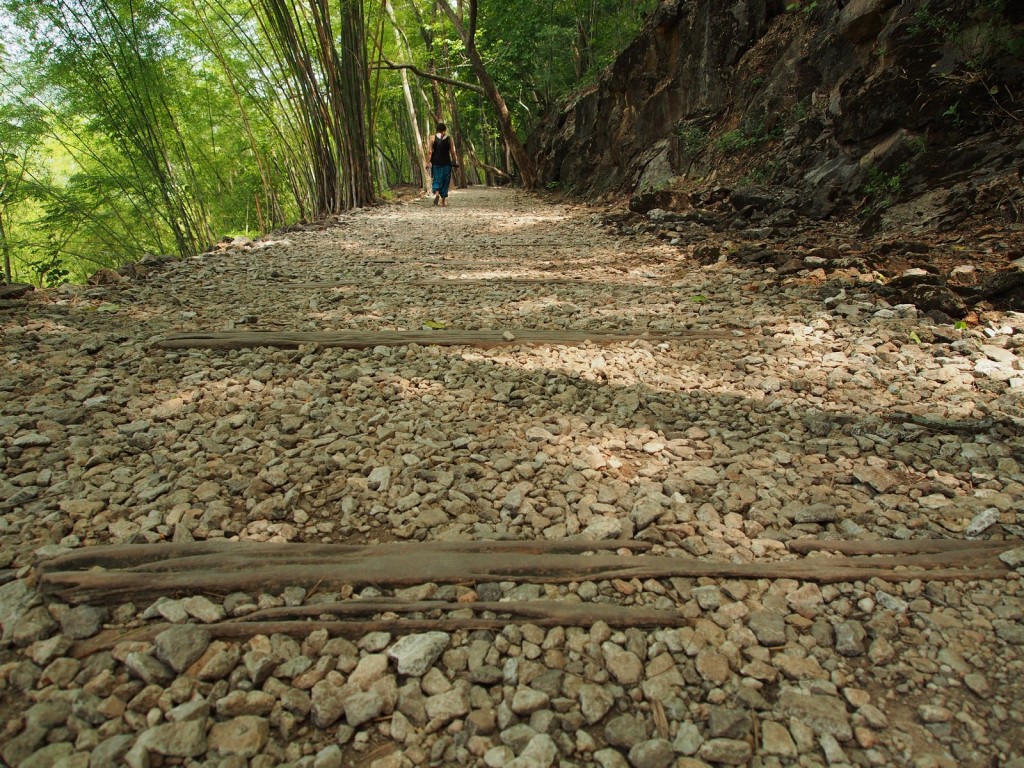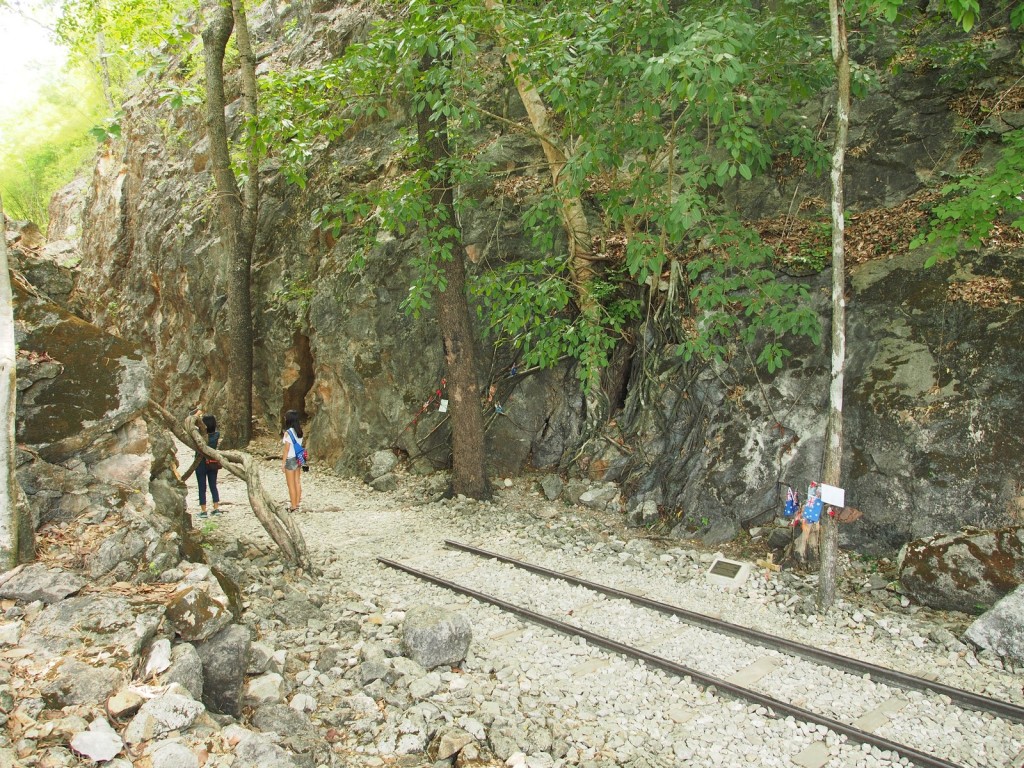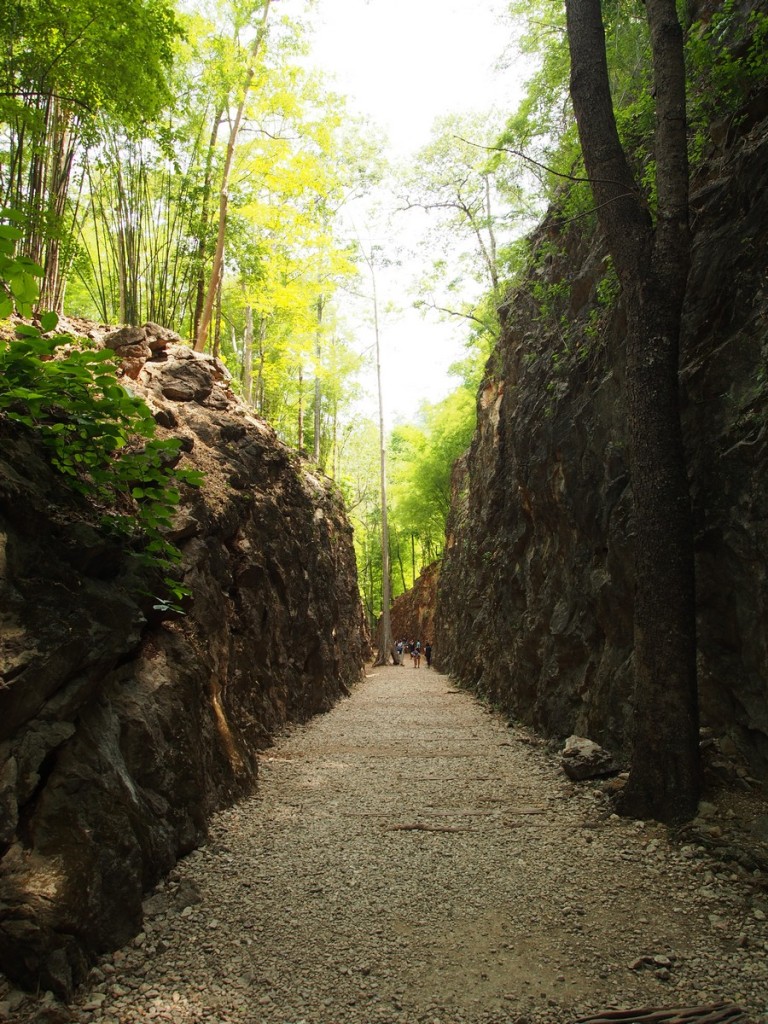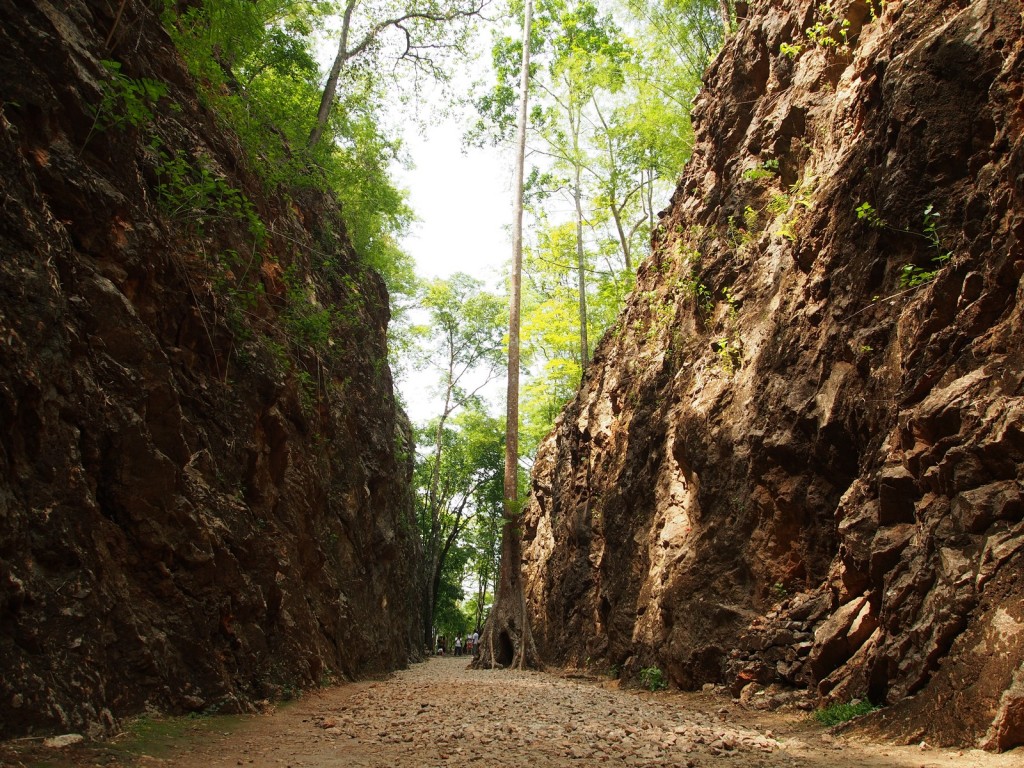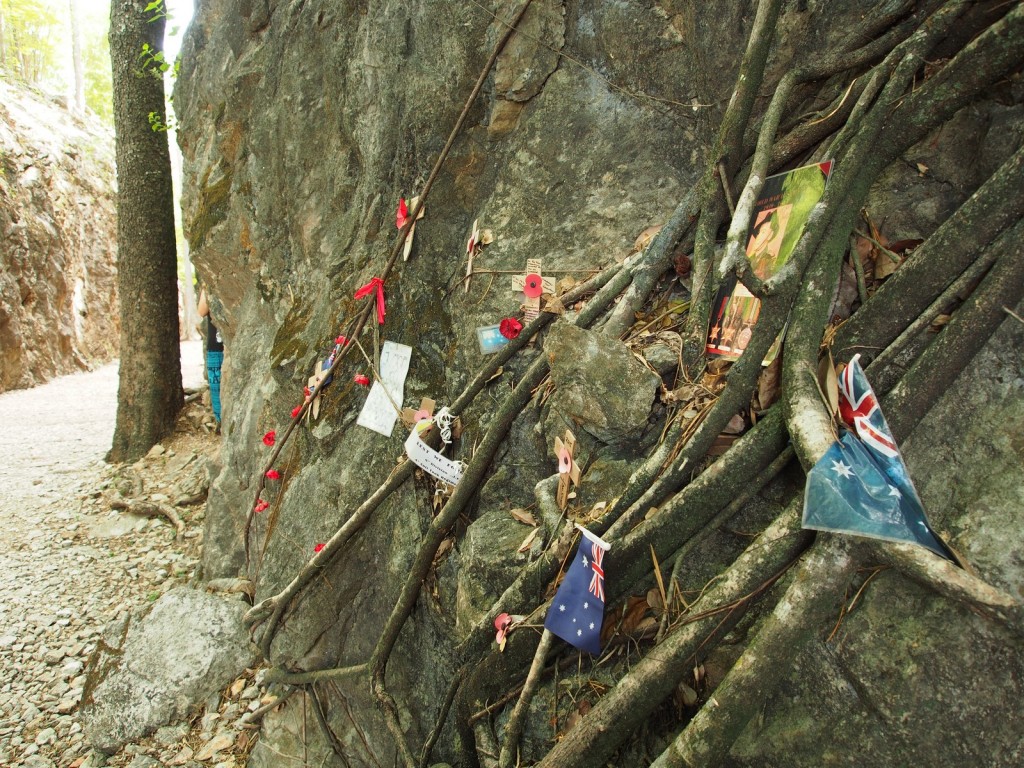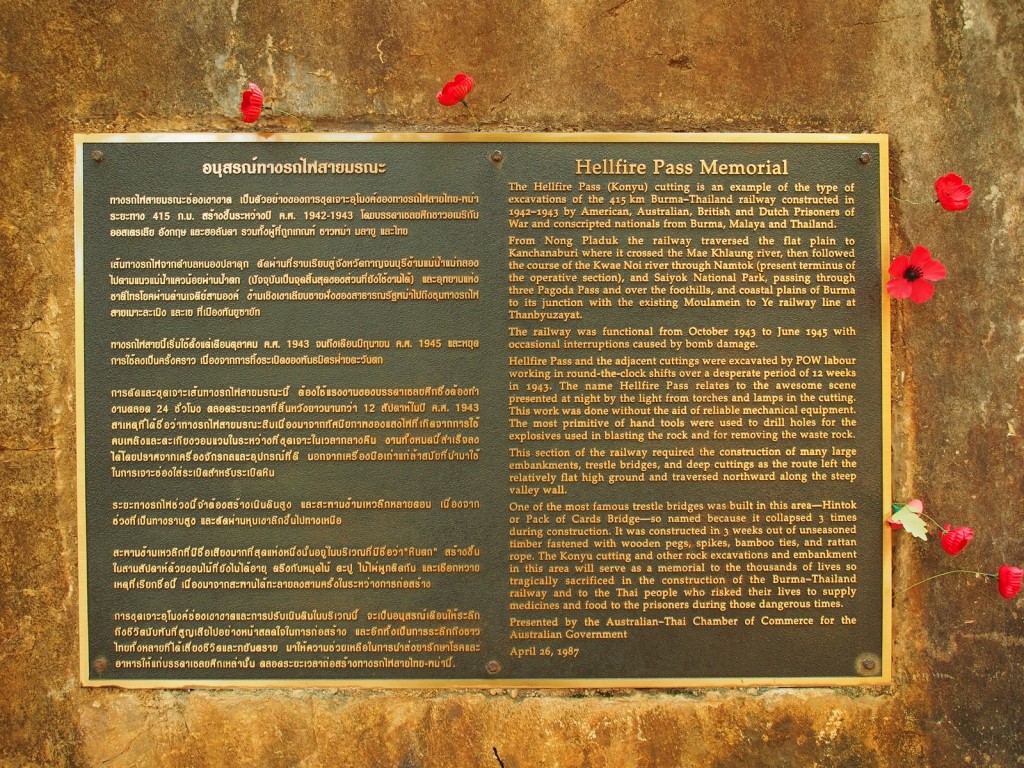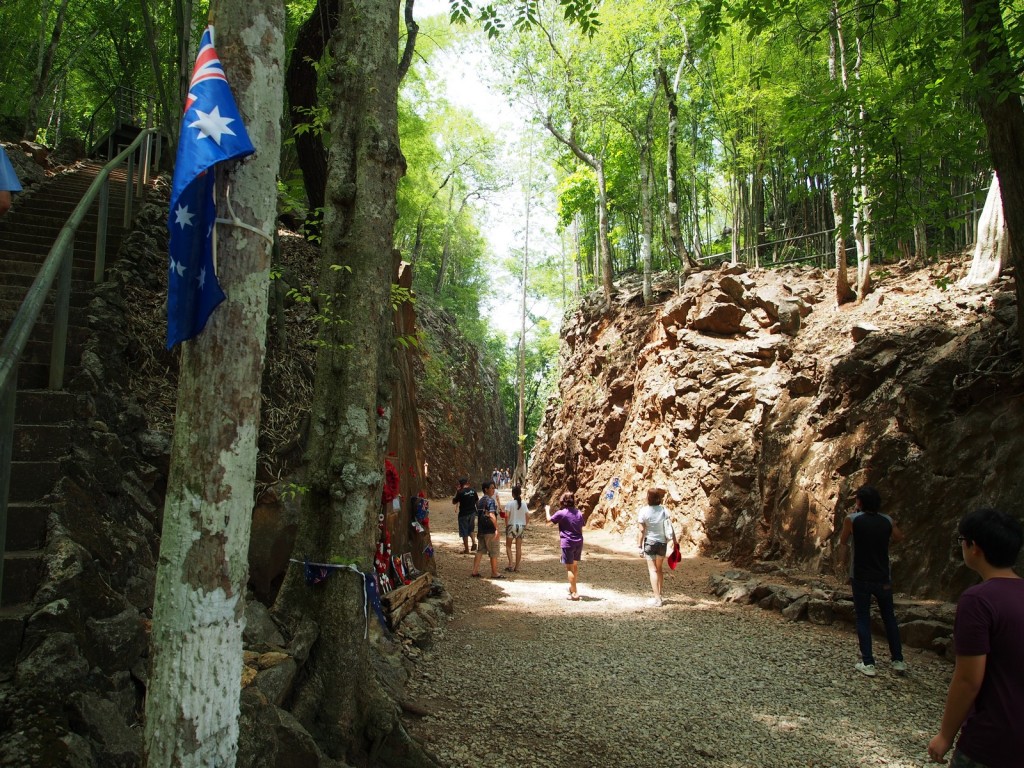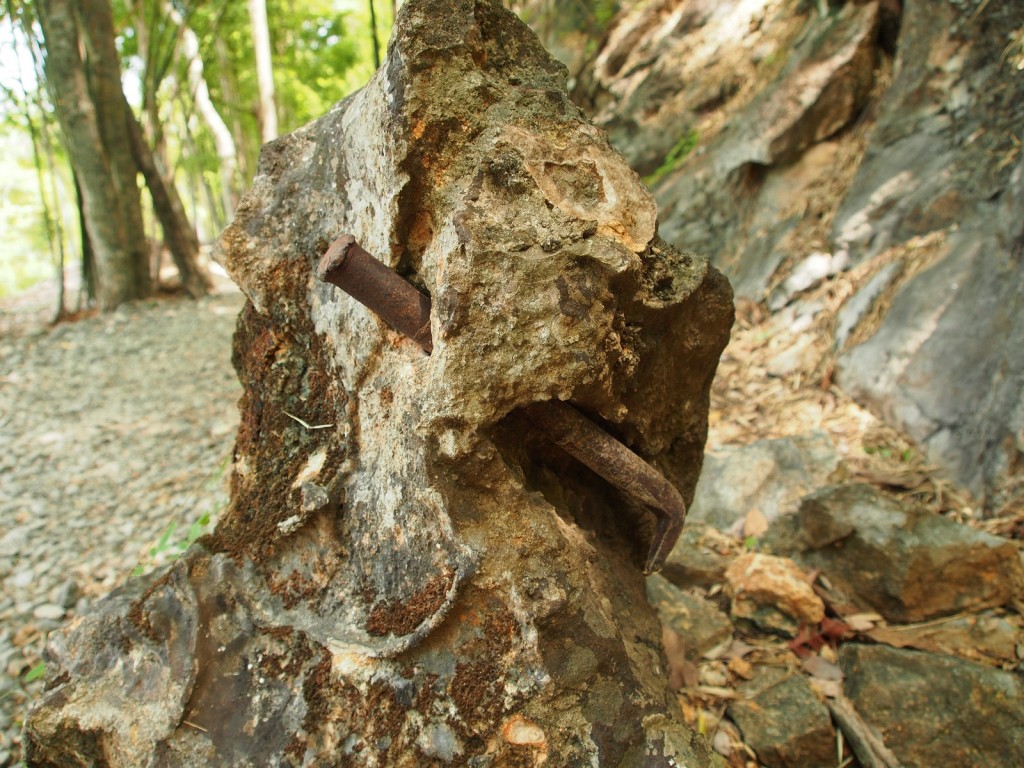The following day, before leaving Phetchaburi, we looked around the summer palace of one of the previous kings, as with most Thai sights situated on top of a hill. This time though we took the easy option, riding up the hill in the funicular.
The palace itself is reminiscent of European summer houses, and now houses a museum.
There’s a small shrine the king built for his private worship.
The gardens and walkways were beautiful, lined with frangipanis and other tropical flowers.
A large stupa is perched on a nearby hilltop.
There’s also an older temple that the King ordered rebuilt.
Heading north, we were now within striking distance of Bangkok, but had a few more things to see first. The Amphawa floating markets are a popular day trip for locals and tourists alike, with both the boats on the river and the shoreside stalls bustling with people.
A waterside restaurant – the kitchen is on the boat, while the patrons sit on the stairs.
Every kind of food was available, freshly cooked while you watched (although I’m less certain about the refridgeration).
To the west of Bangkok lies the city of Kanchanaburi, made famous internationally by its role in the infamous Death Railway to Burma in WW2, and the Bridge over the River Kwai located there. After a long and extremely hot afternoon of riding (my dash overreads slightly, but was showing 48 degrees), we settled in to the quiet local guesthouse, and went exploring.
The bridge itself is an elegant structure, only just wide enough for the railway line. The parabolic arches are the original ones built by the POWs, while the square sections in the middle are the post-war replacements fixing the damage from American bombers in 1945.
The line is still in use at this point, and the tourists swarming all over the bridge move slowly to the shelter points as oncoming trains stop and blow their whistle impatiently.
As it was getting late we grabbed a few beers at one of the waterfront restaurants and watched the sun go down.
The next day we set off early, to see the other major sight on the Death Railway – Hellfire Pass. The site has been heavily sponsored by the Australian Government as a museum, and is very professionally set up as a result.
This is definitely a more thoughtful, cerebral experience than most of the sights I’ve seen so far – it requires a fair amount of imagination to bring the scene to life, as there isn’t that much to see – just a cutting in the side of a mountain, with a few timber sleepers embedded in the ground. Here though, thousands of Allied POWs were forced to endure the worst conditions imaginable, used as slave labour by the Japanese to aid their war effort. No medicine, not enough food, daily beatings and torture, and intolerable heat and rain. The cruelty of the guards was legendary, known as “bastards, the bloody lot of them”. Hellfire Pass is the deepest and longest cutting on the railway, some 75 metres long and 25 metres deep, excavated by hand into hard rock.
As it was Anzac Day (Australia’s annual military commemoration day) only a week or so prior, there were plenty of mementos from the dawn service.
Hellfire Pass is named as such due to its difficulty – work fell behind schedule here, so the emaciated and disease-ridden prisoners were forced to work 15 to 18 hour shifts, lit only by flickering bamboo torches – a scene said to resemble Hell closely.
In total more than 12,000 Prisoners of War and an estimated 90,000 local conscripted labourers perished building the 417 kilometre long railway, and many more never recovered from the harsh treatment endured.
With this visit complete, we made a dash through the heat to Bangkok.

